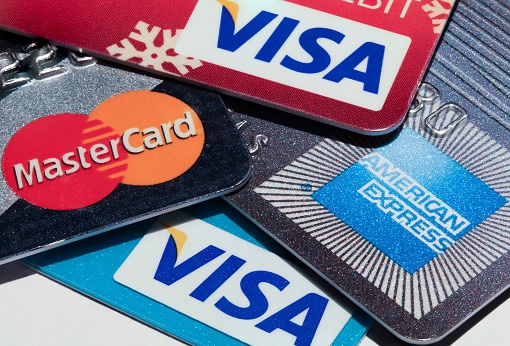American consumers have gotten themselves into a bigger and scarier financial trouble than before. They’ve just created a new record – highest credit card debt in the history of the United States. A report by the Federal Reserve on Monday confirmed that Americans had accumulated US$1.021 trillion in outstanding credit card debt in June 2017.
The spendthrift Americans first breached the US$1 trillion mark in December 2016, and have never looked back ever since. While household income has grown over the past decade, it has failed to keep up with the increased cost of living over the same period. To bridge the gap, Americans take the easy way out – relying on credit cards to finance their spending.
Consumers’ revolving credit, or simply credit cards, rose by US$7.4 billion in May to $1.02 trillion, the highest level since the 2008 subprime mortgage crisis. Now, at US$1.021 trillion, Americans have hit a historical milestone. Effectively, credit card debt has been growing at an annual growth of 4.9%. Household borrowings, of course, have already surged to a record US$12.73 trillion.

Both automobiles (US$1.13 trillion) and student loans (US$1.45 trillion) have already reached the US$1 trillion mark ahead of credit card lending. However, credit card debt is spread out over a wider pool of Americans than student debt. According to Nilson research, nearly four times as many Americans have card debt than student loan debt.
One of the major reasons why Americans’ credit card debt has ballooned to such a stage is the easy access to the cards. In the first quarter of 2017, major banks gave away credit cards to more than 171 million consumers, the highest number that have had access since 2005, when about 162.5 million people had access.
Essentially, for the first time since the Great Recession, bankers and lenders have given more American consumers with sub-prime, or below average, credit scores, access to credit cards, although they are giving them lower spending limits. Collectively, the household debt of US$12.73 trillion means it has surpassed the 2008 (subprime crisis) peak of US$12.68 billion.

The good news is, however, fewer borrowers have housing-related debt now as compared to 2008. Instead, more Americans have debt in the automobiles and student loans. They also have higher household incomes, not to mention improving housing and stock prices. Still, mortgages make up the bulk of the total debt of US$12.73 trillion – at 67% – as of 2016.
Nevertheless, the impact of debt cannot be underestimated. Previous studies done by the Federal Reserve have shown Americans struggle with their auto debt, which often has high interest rates. In a pattern similar to that seen in the months heading into the 2007-2009 recession, nearly 6-million Americans were at least 90 days late on their automobile payments in 2016.
The disturbing trend is this – older Americans, those ages 60 and older held 22.5% of total household debt in the fourth quarter of 2016, compared with only 15.9% in 2008 and 12.6% in 2003. They could be shouldering more student loan debt than in the past, for their children and grandchildren. Their credit card and auto loan debt balances have also risen since 2008.

This also means that older Americans don’t have enough money saved for retirement. Regardless, the risk is still the same. A survey by UBS Group AG found that the pain has merely spread from one type to other loan types. In the first quarter 2017, 17% of U.S. consumers said they were likely to default on a loan payment over the next year, up from 12% in the third quarter in 2016.
According to a report, about 46% of Americans surveyed by the Federal Reserve could not pay a hypothetical US$400 emergency expense, or would have to borrow to do so. Mark Zandi, chief economist at Moody’s Analytics, said – “If the economy plunges, the most vulnerable borrowers, the low-income, high-debt burdened, they’re going to get nailed.”
Interestingly, if the volcano erupts, the U.S. financial crisis could be looking at debt with zero collateral (credit card loans) and debt with collateral whose value declines over time (car loans). Of the US$1.021 trillion in credit card debt, a whopping US$650 billion was subject to finance charges, meaning this figure cannot be paid in full but would balloon with stacks of interests.

Other Articles That May Interest You …
- Here’s Why You Should Get Out Of Stock Market Now – Before The Volcano Erupts!
- Finance Minister Najib Drove Reserve To Its Lowest In Asia, Unable To Pay $600 Million Debt
- Australian Property Bubble – Get Out Now – Before It Burst
- The Magic Number 2020 – Oil Price Will Be Stuck Below $60 Until Then
- China Invasion – Top 10 American Iconic Brands Now Owned By Chinese
- Outgoing President Obama’s Greatest Legacy – Added $8 Trillion To National Debt
- U.S. Debt – How Much Does Each American Owe?
- Debts & Deficits – 21 Currencies That Have Gone Bust

|
|
August 8th, 2017 by financetwitter
|


|

|

|

|

|

|




























Comments
Add your comment now.
Leave a Reply